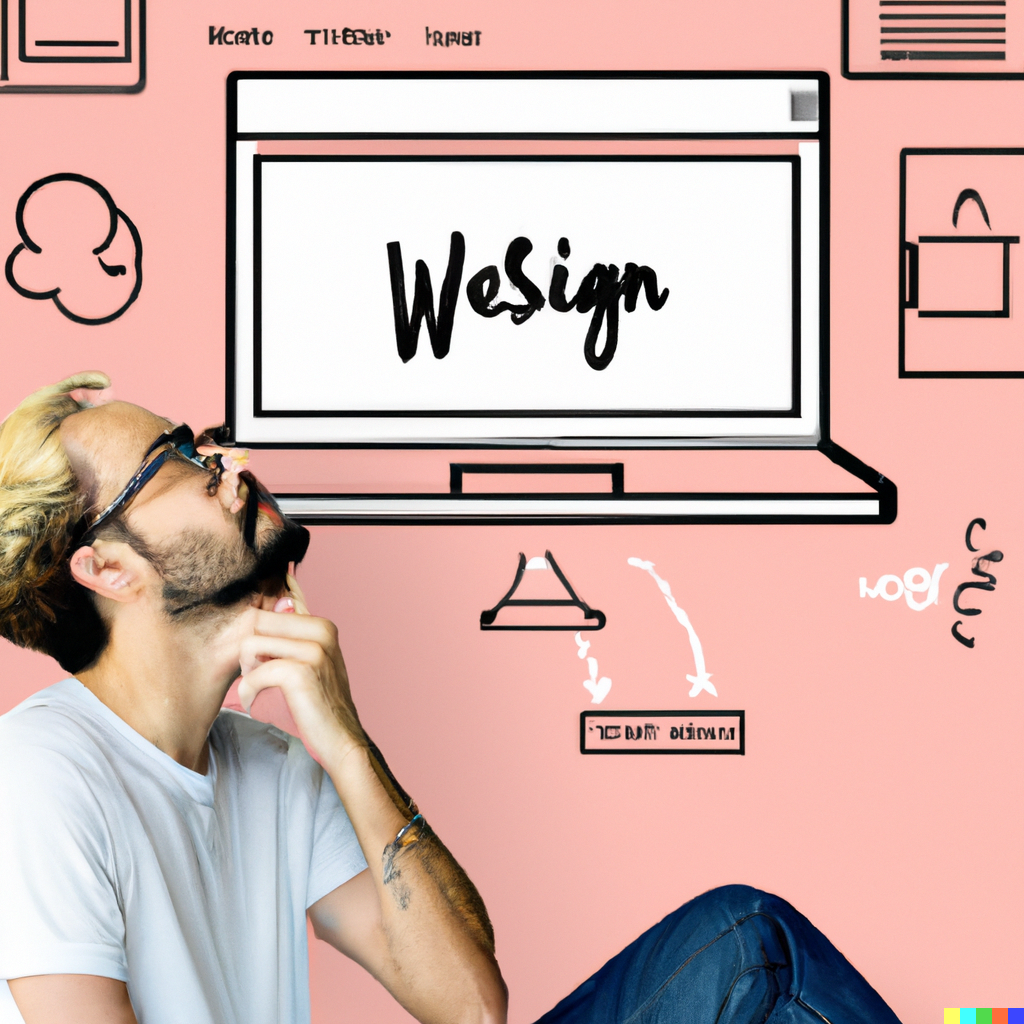
Web Design vs Web Development: What’s the Real Difference?
Have you ever wondered if web design is the same as web development? Perhaps you’re a startup founder in Kerala looking to establish your online presence, or a marketing professional trying to understand what services your business actually needs. While these terms are often used interchangeably, they represent distinct disciplines with different skill sets, tools, and objectives.
In this comprehensive guide, we’ll demystify the difference between web design and web development, helping you make informed decisions about your digital projects. Let’s dive in!
What is Web Design?
Web design is the art and science of creating the visual elements and user experience of a website. It focuses on what users see and interact with directly—the aesthetics, look, and feel of a website.
The Role of a Web Designer
A web designer is like an architect and interior designer combined for the digital world. They’re responsible for:
- Creating the overall visual appearance of websites
- Designing user interfaces (UI) that are intuitive and engaging
- Crafting the user experience (UX) to ensure visitors can easily navigate and find information
- Selecting color schemes, typography, and imagery that align with brand identity
- Ensuring designs are responsive and work across all device sizes
- Creating wireframes and prototypes to visualize the final product
Key Tools Used in Web Design
Web designers typically work with tools like:
- Figmaand Adobe XD for creating mockups and prototypes
- Photoshopand Illustrator for image editing and graphic design
- Sketchfor interface design
- InVisionfor interactive prototypes
- Color palette generatorsand typography tools
The Difference Between UI and UX
While closely related, UI (User Interface) and UX (User Experience) design serve different purposes:
- UI Designfocuses on the visual elements users interact with—buttons, forms, navigation menus, and other interface components.
- UX Designconcentrates on the overall experience—how users feel when navigating your site, the logical flow between pages, and whether the site effectively meets user needs.
Both aspects are crucial for creating websites that not only look beautiful but also function intuitively.
What is Web Development?
Web development is the technical implementation of web designs. It involves writing code to create functional websites and applications that deliver the experience envisioned by designers.
Front-End vs Back-End Development
Web development is typically divided into two main categories:
Front-End Development
Front-end developers bring the designer’s vision to life by coding the visible parts of a website:
- Implementing designs using HTML, CSS, and JavaScript
- Ensuring the site looks consistent across browsers and devices
- Creating responsive layouts that adapt to different screen sizes
- Adding interactive elements and animations
- Optimizing for speed and performance
Back-End Development
Back-end developers work on the server side—the “behind the scenes” functionality:
- Building and maintaining databases to store information
- Creating server-side applications that power website functionality
- Establishing secure connections between servers and users
- Implementing authentication systems for user accounts
- Integrating with third-party services and APIs
Full-Stack Development
Full-stack developers possess both front-end and back-end skills, allowing them to handle the entire development process. This comprehensive approach is particularly valuable for businesses seeking custom website solutions with complex functionality.
Common Development Languages and Tools
Web developers use various programming languages and frameworks depending on their specialization:
Front-End:
- HTML5 (structure)
- CSS3 (styling)
- JavaScript (interactivity)
- Frameworks like React, Angular, or Vue.js
Back-End:
- PHP, Python, Ruby, or Node.js
- Database systems like MySQL, MongoDB, or PostgreSQL
- Server technologies like Apache or Nginx
- Content Management Systems like WordPress
Key Differences Between Web Design and Web Development
Aspect | Web Design | Web Development |
Focus | Aesthetics, usability, and user experience | Functionality, performance, and technical structure |
Output | Visual mockups, wireframes, prototypes | Functional website code and applications |
Tools | Design software (Figma, Adobe XD, Photoshop) | Code editors, frameworks, version control systems |
Skills Required | Visual design, UX principles, color theory | Programming languages, logic, database management |
Goals | Create attractive, intuitive user interfaces | Build functional, secure, and efficient websites |
Metrics for Success | User engagement, visual appeal, ease of use | Site speed, functionality, security, code quality |
Despite these differences, the best websites result from close collaboration between designers and developers. Think of it as a relay race—designers create the vision and hand it off to developers who bring that vision to life with code.
Why Understanding the Difference Matters for Businesses in Kerala
Kerala’s digital landscape is evolving rapidly, with businesses of all sizes establishing their online presence. Understanding the distinction between web design and web development is crucial for several reasons:
1. Project Planning and Budgeting
Knowing what skills your project requires helps you allocate resources effectively. Some projects might need more design work (like branding-focused sites), while others require complex development (like e-commerce platforms or custom applications).
2. Hiring the Right Expertise
Whether you’re looking to build an in-house team or partner with website design services in Kerala, understanding these different roles helps you find professionals with the specific skills your project needs.
3. Setting Realistic Timelines
Design and development have different workflows and timeframes. Understanding both helps you create realistic project schedules and avoid the common pitfall of underestimating the time required.
4. Communication and Expectations
Being familiar with basic design and development concepts improves communication with your digital partners, ensuring your vision is accurately translated into the final product.
5. Making Informed Decisions
Knowledge of both disciplines helps you make strategic decisions about technology platforms, design approaches, and future scalability.
How Bethel Soft Technologies Bridges the Gap
At Bethel Soft Technologies, we understand that successful websites require excellence in both design and development. Our integrated approach to web design and web development in Kerala ensures seamless collaboration between our design and development teams, resulting in websites that are:
- Visually stunning and on-brand
- Highly functional and feature-rich
- Responsive across all devices
- SEO-friendly from the ground up
- Secure and performance-optimized
- Scalable as your business grows
Our process begins with understanding your business goals and target audience before moving into design concepts. Once the design direction is approved, our development team brings these designs to life with clean, efficient code. This collaborative workflow ensures that nothing is lost in translation between the design vision and the final implementation.
Final Thoughts: Design + Development = Digital Success
Think of web design and development as two sides of the same coin—both essential for creating truly exceptional websites. While they require different skill sets and focus on different aspects of website creation, they share the common goal of building effective digital experiences.
The most successful websites result from seamless collaboration between designers and developers, with each respecting and enhancing the other’s work. When both disciplines work in harmony, the result is a website that not only looks beautiful but also performs flawlessly.
For businesses in Kerala looking to establish or enhance their online presence, understanding this partnership is the first step toward digital success. By appreciating what each discipline brings to the table, you can make more informed decisions about your web projects and find the right partners to bring your vision to life.
Frequently Asked Questions
Can one person be both a web designer and developer?
Yes! Some professionals have skills in both areas and are known as “designer-developers” or “full-stack designers.” However, as websites become increasingly complex, many professionals specialize in either design or development to maintain expertise in their field.
Which is more important: web design or web development?
Neither is more important—they’re complementary disciplines. Even the most beautiful design won’t succeed without proper implementation, and even the most robust code won’t engage users if the interface is poor. Both are essential for a successful website.
How do I know if my project needs more design or development focus?
Consider your project goals: If brand perception, user engagement, and visual impact are primary concerns, you might need more design resources. If your website requires complex functionality, custom features, or integration with other systems, development might need more attention.
How does SEO fit into web design and development?
Both disciplines impact SEO. Designers create user-friendly experiences that reduce bounce rates and increase engagement (which search engines reward), while developers implement technical SEO elements like fast-loading pages, proper metadata, and mobile responsiveness.
